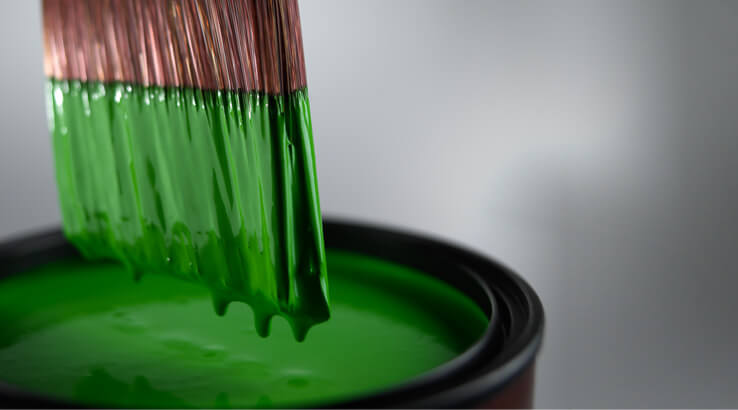Maybe you’ve seen it mentioned on the side of a paint can, or maybe you’ve heard about the EPA’s plans to get strict about them- but what do you need to know about low VOC paints?
What is a VOC?
VOC stands for Volatile Organic Compound, but in simpler terms VOCs are gaseous toxins that are released from liquids or solids. Unfortunately, VOCs are commonly occurring in many household items, including home improvement supplies.
Some VOCs have been linked to cancer by the American Lung Association, but the really insidious concern is that it is possible for some substances to gradually release VOC’s for years after the substance was first set in place. This means that while paint fumes are obviously bad to inhale, and you should always make sure to have plenty of ventilation when doing DIY paint projects, that long after the paint has dried on the wall, there might be a risk of VOCs continuing to slowly seep into the air. Considering that most people spend 80% of their lives indoors, this is a health issue worth paying attention to.
Low VOC paints as an alternative
So if it’s so bad, why would there be paints that are high in VOC hazardous substances? VOCs haven’t always been well understood, and for many years most paint companies lacked the laboratories necessary to accurately detect their presence in their paints.
Meanwhile, it’s the same ingredients that are so hazardous that in the past were prized for their ability to make vibrant and powerful paints. According to a new Consumer Reports investigation many of the paints which had previously been rated by them as among the best paints one could buy, were also the paints highest in VOC proportions. However, between better understanding of the dangers by customers and pressure from governmental organizations like the EPA, new laws are in place capping the amount of VOC hazardous chemicals allowed in paint bases and manufacturers now market special low VOC paints or even “no VOC” paints.
What to look out for
According to that same Consumer Reports study, all products labeled as a low VOC paints had more VOCs than were advertised, including the so-called “no VOC” paints. However, none of the paints exceeded the Federal limits.
California has much more stringent regulations on VOCs than the Federal government, and in the greater Los Angeles region there are even stricter requirements. The biggest concern they identified however is that the regulations are just for the base paints, but that adding a tint (even a white tint) can more than double the VOC content of a paint.
Look for tints that are also advertised as being safe for home use before using that “nursery safe paint” in a nursery room.
Finally, don’t be afraid to open a window or even go outside every once in a while! We’ll never be able to completely avoid all contact with micro-quantities of toxic substances, but spending less time cooped up with them can only be good for our health. And when it’s time to freshen up your walls, know that all low VOC paints are not created equal, so don’t hesitate to ask, read labels and compare.
As a full-service construction and remodeling company in San Diego, Collom Construction Inc. possesses the resources necessary for a successful project. We deliver products of quality craftsmanship and work with you to meet your needs and respect your budget.
Give them a call today to set up an appointment for a free quote.
